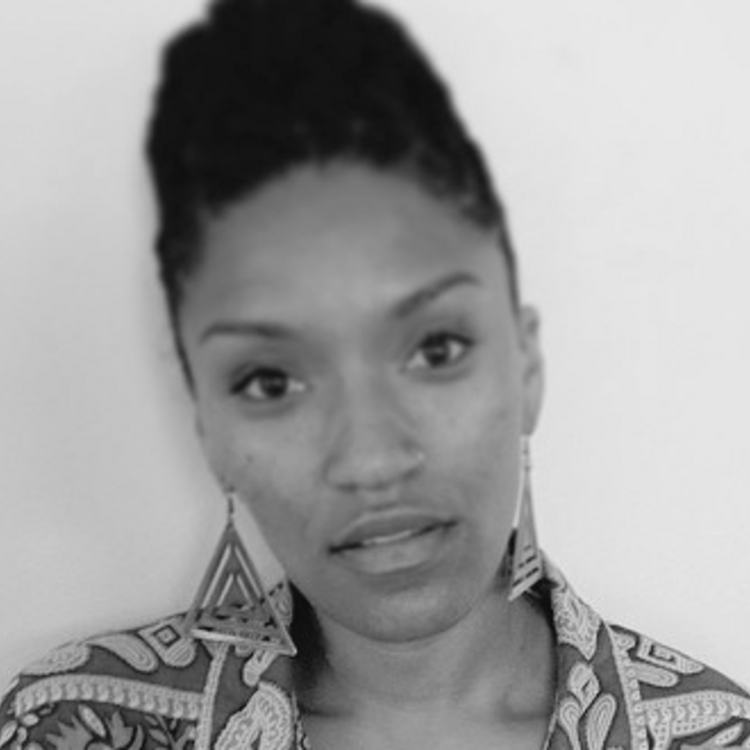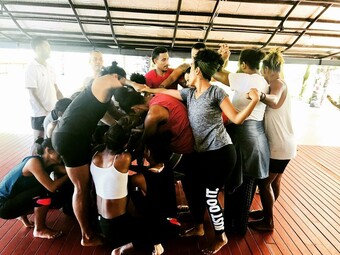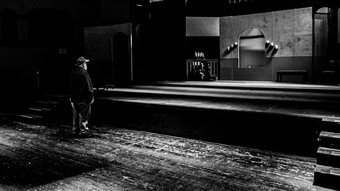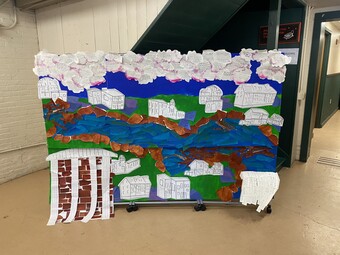So Where Do Artists Work?
As I walk down Striver’s Row, at 139th between Adam Clayton Powell and Fredrick Douglass Boulevard, gazing upon the architecture of what is hailed as some of the most valuable real estate in New York City, I’m reminded of the contributions of African American artists that make Harlem an international brand. Throughout New York City, these contributions have turned destitute communities into vibrant and trendy neighborhoods. They have connected people beyond race, sex, religion and location. Artists resided here and developed groundbreaking work that identified Harlem as one of the most attractive destinations in the world. Harlem was not only their place of residence but a creative home for their work.
We are honoring the legacies of our predecessors, while pioneering the "New Renaissance”; amplifying the beauty and innovative work that has been created in Harlem.
Today, Harlem is still the home of many artists, myself included. We are honoring the legacies of our predecessors, while pioneering the “New Renaissance”; amplifying the beauty and innovative work that has been created in Harlem. There are bold voices speaking rather loudly, reminiscent of those that have preceded our generation. With purposeful and tenacious presence, these artists choose to live and work in Harlem, even with changes within the overall arts landscape.
As I continue my commute, crossing over Fredrick Douglass Blvd, my soul somehow knows what Harlem once was. The sidewalks seem to regurgitate the daily steps of Bill “BoJangles” Robinson and the birds sing echos of Duke Ellington’s famous tunes. By the time I arrive at St. Nicholas Ave, my imagination is usually filled with images of Eubie Blake or even Count Basie heading to their Harlem homes. And as we face many changes in our world and gentrification may seem to overpower the community, I’m empowered by their lives and legacies. Harlem still remains the home and workplace of many artists.
Once I arrive at The Harlem School of the Arts, I often stand in awe of our award winning facility that has been a haven for many working artists. Founded by Dorothy Mayor in the basement of St. James Presbyterian Church, HSA was designed with the mission of empowering youth to become model citizens through the arts. With its 47 year history, it was the training ground for artists Katori Hall, Noah Stewart, Jaylene Clark, Harolyn Blackwell and many others. In addition to our arts programs, our facility is made available for artists.
“We hope that artists and the Harlem community will see us as a resource for art making. We’ve held panel discussions, community meetings, performances, and have artists rehearsing on a regular basis. It’s a place where the arts and artists thrive.” —Yvette L. Campbell, President & CEO of Harlem School of the Arts
While most live theater in New York happens downtown, Harlem is equipped with several resources and venues for artists. In addition to the legendary Apollo Theater, other spaces are easily accessible and available for artists to workshop and present their work. Harlem Stage has generously afforded a myriad of opportunities for emerging artists with the Fund for New Work. The Riverside Theatre has created an entire festival for new works. Other spaces include The Faison Firehouse Theater, co-founded by the incomparable George Faison, Dwyer Cultural Center, Aaron Davis Hall, The Schomberg Center for Research in Black African Culture, The Poets Den Gallery and of course The HSA Theater at The Harlem School of the Arts.
In my current role at the Harlem School of the Arts, I hope to develop more ways that artists can access rehearsal and performance space. I hope to attract several arts lovers to our new and exciting adult programs while working with other businesses and organizations to strengthen our resources for the arts community. We’ve been able to provide a wonderful working environment for individual artists, dance and theater companies, and music ensembles. HSA has provides a wonderful working environment for artists during it’s off-peak hours.
Before I go sit at my desk, I pause to think once more of the infinite future of our vibrant arts community in Harlem. Unfortunately, the devastating truth of increasing rental prices could potentially mean that artists may lose a home and haven in Harlem. While there is a new live/work developments in East Harlem, conversations across sectors and industries could help us ensure the artistic and economic health of our communities.
This preservation and collaboration is vital to ensure that when you walk down Harlem streets, you can take a moment to recognize the very ground on which you walk. You might just catch the shadow of Zora, hear whispers of Langston in the wind, or stumble upon the sounds of the future generation resonating through the walls of our legendary art spaces and homes.


















Comments
The article is just the start of the conversation—we want to know what you think about this subject, too! HowlRound is a space for knowledge-sharing, and we welcome spirited, thoughtful, and on-topic dialogue. Find our full comments policy here